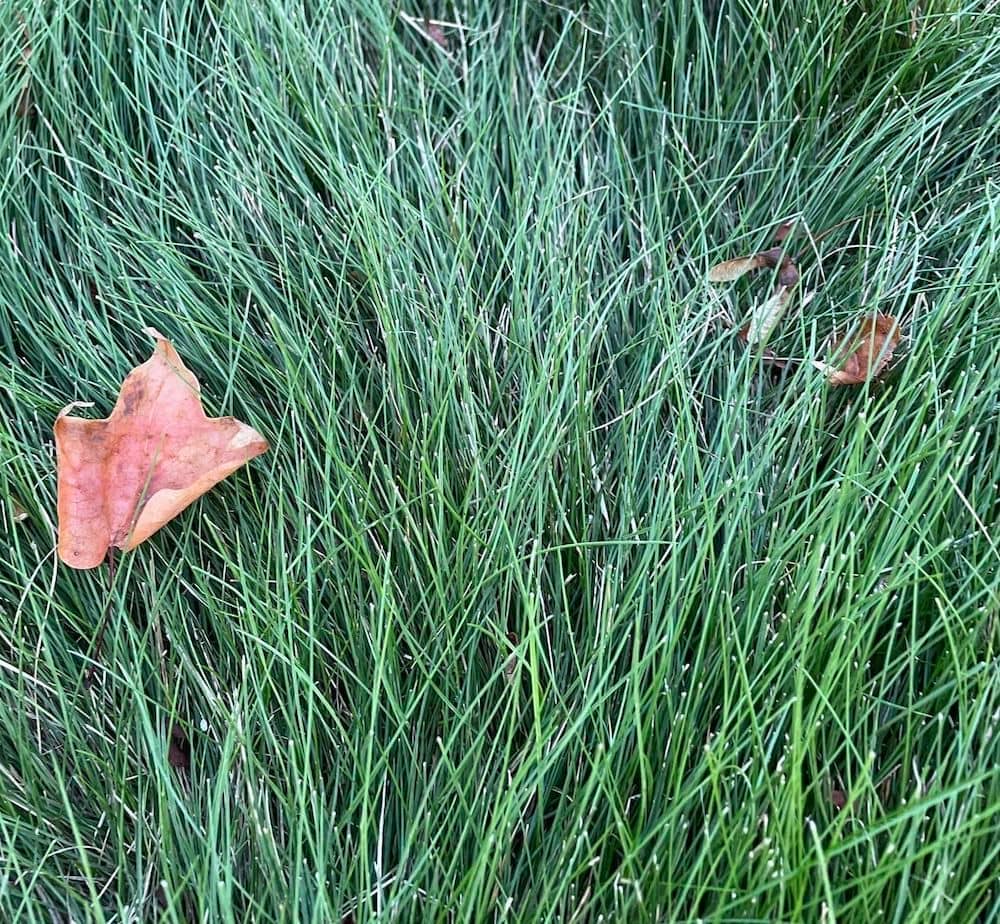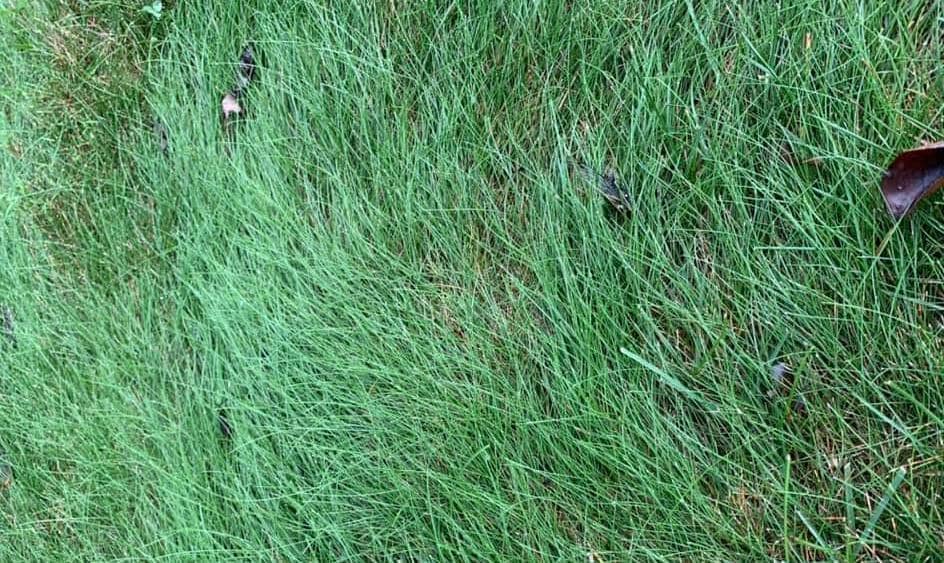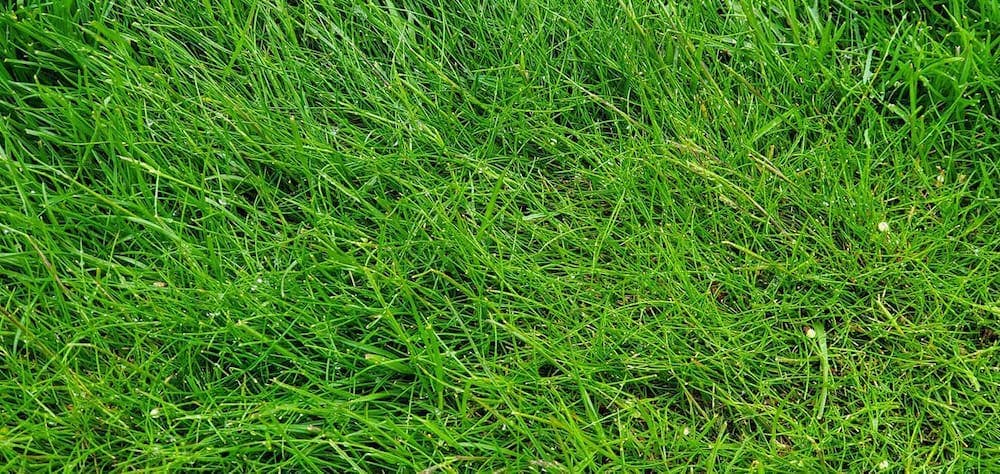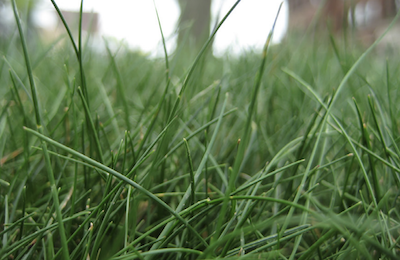In this guide to Fine Fescue, we'll discuss everything from cost to best mowing height while also looking at the pros and cons. By the end, you'll be perfectly positioned to know whether it's the right sod type for you.
Curious about what makes fine fescue a standout choice for many lawns and landscapes?
Known for its delicate texture and ability to thrive in shady areas, this group of cool-season grasses is more than just a pretty surface.
This comprehensive guide is designed to deepen your understanding of fine fescue, covering everything from its growth habits to care tips.
Whether you're a seasoned gardener or just starting out, you'll find valuable insights that could change the way you approach your lawn care.
Keep reading to uncover the full potential of fine fescue in your own backyard.

Key Facts and Features
Fine fescues are cool-season grasses with several distinct attributes. In this section, we will discuss their key characteristics, including their appearance, shade tolerance, and growth patterns.
Firstly, fine fescues are known for their thin, needle-like blades that create a soft, lush, and carpet-like appearance on lawns. The most common species of fine fescues include creeping red, chewings, hard, and sheep fescue.
Among these, all of them are bunch-type grasses, except for the creeping red, which grows via rhizomes.
In terms of shade tolerance, fine fescues are excellent. They can survive in moderate to high shade conditions, which makes them ideal for locations with plenty of trees or where direct sunlight is limited.
Level Up Your Lawn Skills
Once per week we'll send you an interview from someone who has mastered the art of lawn care.
Additionally, these grasses exhibit good drought resistance, able to tolerate moderately dry conditions without wilting.
However, one downside to fine fescues is their low traffic tolerance. Lawns with high foot traffic may suffer wear and tear more quickly, so it's crucial to consider this factor when selecting grass species for your lawn.
To sum up, here are the key characteristics of fine fescue grass:
Cool-season grass
Thin, fine-textured blades
Species include creeping red, chewings, hard, and sheep fescue
Excellent shade tolerance
Moderate to high drought resistance
Low traffic tolerance
If you're looking for a grass type that features a stunning, fine texture and is well-suited for areas with shade or drought-prone environments, fine fescues could be an excellent choice for your lawn.

Pros and Cons
Fine fescue grass is an excellent option for many homeowners due to its unique characteristics. However, it also has some drawbacks. In this section, we discuss the pros and cons of fine fescue to help make an informed decision when choosing the right grass for your lawn.
Pros
Shade tolerance: Fine fescue is highly shade tolerant, making it ideal for lawns with limited sunlight.
Fine texture: The grass has a fine texture, which gives lawns an appealing, soft look.
Low maintenance: Fine fescue requires less care compared to other grass types, making it a great option for busy homeowners.
Cold weather resilience: This grass type thrives in cool-season climates, making it well-suited for northern regions.
Cons
Limited traffic tolerance: Fine fescue doesn't tolerate heavy foot traffic as well as other grass types, which can lead to wear and tear in high-traffic areas.
Disease susceptibility: Though a tough grass, fine fescue is more susceptible to diseases compared to other grasses.
Potential for weed growth: Without proper mowing and care, fine fescue can appear shaggy or like weeds.
Inappropriate for warm climates: Fine fescue may struggle in warmer climates, as it is primarily a cool-season grass.
By understanding these pros and cons of fine fescue, you can determine if this grass type is the right choice for your lawn or landscape.
Cost Considerations
When planning to grow fine fescue grass in your lawn, it's crucial to consider costs. In this section, we will discuss some of the major cost aspects.
Seeds and Sod: There are two primary ways to establish a fine fescue lawn – seeding or sodding. Seeding is usually less expensive, but it takes more time for the grass to establish. Sod offers instant results but comes at a higher cost. Prices for fine fescue seeds and sod can vary depending on the specific type of fescue and the quality of the product.
Soil Preparation: Proper soil preparation is essential for a thriving fine fescue lawn. This may involve purchasing soil amendments such as organic matter or sand, renting equipment like rototillers, or hiring a professional to perform the task. Costs for these aspects depend on the region and the size of the lawn.
Irrigation: While fine fescue is more drought-tolerant compared to other grasses, it still requires some irrigation. Investing in an efficient irrigation system, whether it's a simple garden hose and sprinkler or a more advanced in-ground system, can alleviate the stress of manual watering. The cost of an irrigation setup varies depending on the complexity and system components.
Maintenance: Fine fescue is considered a low-maintenance grass, requiring less fertilizer, water, and mowing than other species. However, there are still costs associated with upkeep. This includes purchasing fertilizer, occasional overseeding, and lawn care tools, or hiring a lawn service company for maintenance tasks.
Pest Control: Although fine fescue is relatively pest-resistant, it's important to have a budget for potential pest control measures. This may include products to deal with insects, weeds, or diseases potentially affecting the lawn.

Varieties of Fine Fescue
There are several varieties of fine fescue that we can choose from. Each type has its own unique characteristics and strengths. Knowing these differences helps us select the best variety for our specific needs.
Creeping Red Fescue is a popular choice for lawns due to its adaptability to various soil types and shade tolerance. It forms dense and attractive lawns, spreading through rhizomes. This makes it perfect for both sunny and shady areas of our garden.
Hard Fescue is known for its drought tolerance and low maintenance requirements. This variety forms a dense, dark green turf perfect for low water and nutrient environments. Its fine texture and low-growing habit make it an ideal choice for naturalized areas or low-maintenance landscapes.
Chewings Fescue is often used in high-quality, low-maintenance lawns. It has a fine leaf texture and establishes well in both sun and shade. With its upright growth habit, mowing it at higher lengths benefits its appearance and health.
Sheep Fescue is not typically used as a standalone lawn variety but is often included in mixtures for erosion control or as a filler grass. It has a fine and wiry texture, performs well under low fertility, and can survive with minimal water.
In summary, we have several fine fescue varieties to choose from, each with its distinct characteristics. Whether we're looking for shade tolerance, low maintenance, or drought resistance, there's a fine fescue variety that suits our needs.
Seeding vs. Sodding
When establishing a fine fescue lawn, you have two options: seeding and sodding. Each has its pros and cons that we'll explore to help you make the best decision for your lawn.
Seeding Fine Fescue
Seeding is a popular choice because it is cost-effective and provides flexibility in choosing the exact fine fescue variety or blend for your needs. You can also easily overseed an existing lawn. Some points to consider when seeding:
Best time to seed: fall or early spring
Seed rate: 3 to 5 pounds per 1,000 sq. ft. (source)
Germination time: 7 to 14 days
When choosing seeds, look for high-quality options with at least 85% germination rate and 95% purity (source). Remember that proper soil preparation, watering, and maintenance are crucial for successful establishment.
Laying Fine Fescue
Sodding offers an instant lawn solution, which is great for those who want quick results. Your lawn will look green and mature from day one. Some points to consider when sodding:
Higher cost compared to seeding
Increased labor for installation
Limited availability of fine fescue sod varieties
Sod is a good option if you need rapid erosion control or if you're working on a slope. Remember to water daily until the sod is well-rooted, which takes about 2 to 3 weeks. Proper installation and maintenance, such as watering and mowing, are important for a successful sod lawn.
In conclusion, both seeding and sodding can result in beautiful fine fescue lawns. Your choice should be based on your budget, desired timeline, and specific lawn conditions.
Care and Maintenance
One of the biggest draws of fine fescue grass is its low-maintenance needs. To keep your fine fescue lawn looking its best, we'll guide you through some essential care and maintenance procedures.
Mowing: The right mowing height for fine fescue is generally between 2.5 to 4 inches. Adjust your mowing frequency depending on the weather conditions. During cool and wet weather, we recommend mowing more often, while in hot or dry weather, mow less frequently.
Watering: Fine fescue has a moderate to high drought resistance. However, to keep your lawn healthy and lush, it's important to provide proper hydration. Water your fine fescue lawn 1 inch per week at the beginning of fall and decrease to ½ inch per week starting in mid-October. Keep an eye on precipitation accumulation, especially after your irrigation system has been winterized.
Pro tip: While fine fescue is generally low-maintenance, implementing these practices will ensure your lawn stays healthy:
Use low mowing heights for optimal growth
Leave mowing clippings on the turf to help retain moisture
Employ a low to moderate nitrogen fertilizer program mostly applied in the fall
By closely following these care and maintenance tips, we can ensure our fine fescue lawn looks great with minimal effort. Remember, consistency is key when it comes to maintaining a beautiful and healthy lawn.
Historical and Background Information
Fine Fescue is a term used for a group of cool-season grasses known for their fine blades and shade tolerance. These grasses include creeping red fescue, hard fescue, chewings fescue, and sheep fescue. They are often used in lawn and turf applications, particularly in cooler climates and shaded areas.
These grass species, also called fine-leaf, fine-leaved, or bristle-bladed fescues, have been used in the turf industry since the 16th century. Fine Fescues have a rich history, and with their versatile features, they continue to be an important element in landscaping and turf maintenance.
Fine Fescues have several noteworthy characteristics:
Classification: Cool-season grass
Spreads by: Bunch-type grasses; Creeping red fescues possess rhizomes
Shade tolerance: Moderate to high
Drought resistance: Moderate to high
Foot traffic tolerance: Low to moderate
Given their properties, Fine Fescues make an excellent choice for various landscaping and lawn care projects. They can adapt well to different environments, thereby making them a popular choice among homeowners and lawn care professionals.
Frequently Asked Questions
How shade tolerant is Fine Fescue?
Fine Fescue is known for its tolerance to shade. In fact, it is one of the best cool-season grasses for shaded areas. However, it still requires some sunlight to thrive. Ideally, it should get at least 4 hours of sunlight daily.
Can Fine Fescue withstand drought conditions?
Fine Fescue can tolerate mild drought conditions, but it's not the most drought-tolerant grass species. During dry periods, it may go dormant to conserve water. To maintain its health during droughts, it's essential to provide supplementary irrigation as needed.
What are the maintenance requirements for Fine Fescue?
Overall, Fine Fescue is a low-maintenance grass type. It does not require frequent mowing and can be mowed between 1.5 to 3 inches depending on species and intended use. Keep in mind that low mowing heights are usually reserved for golf courses. Additionally, fertilization requirements are minimal compared to other grass types.
How well does Fine Fescue handle foot traffic?
Fine Fescue is not the most wear-resistant grass species but can tolerate moderate foot traffic. For sports fields and golf courses, it is often mixed with other grass types such as Kentucky bluegrass or perennial ryegrass to improve durability.
How does Fine Fescue contribute to thatch buildup?
Fine Fescue is a relatively low-thatch grass species. Thatch buildup is generally not a significant issue in Fine Fescue lawns. However, as with any turfgrass, improper maintenance practices such as overwatering or overfertilization can contribute to increased thatch buildup. To minimize thatch, follow the recommended maintenance guidelines for Fine Fescue.
Fine Fescue versus other types of sod
- Fine Fescue vs. Bermuda comparison →
- Fine Fescue vs. Buffalo comparison →
- Fine Fescue vs. Zoysia comparison →
- Fine Fescue vs. Tall Fescue comparison →
- Fine Fescue vs. Kentucky Bluegrass comparison →
- Fine Fescue vs. Perennial Ryegrass comparison →
- Fine Fescue vs. St. Augustine comparison →
- Fine Fescue vs. Centipede comparison →
- Fine Fescue vs. Bahia comparison →
Level Up Your Lawn Skills
Once per week we'll send you an interview from someone who has mastered the art of lawn care.

